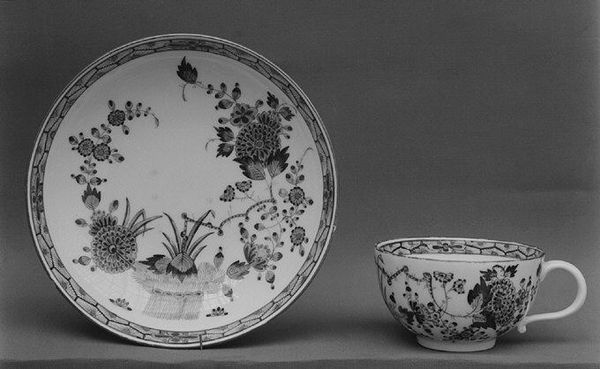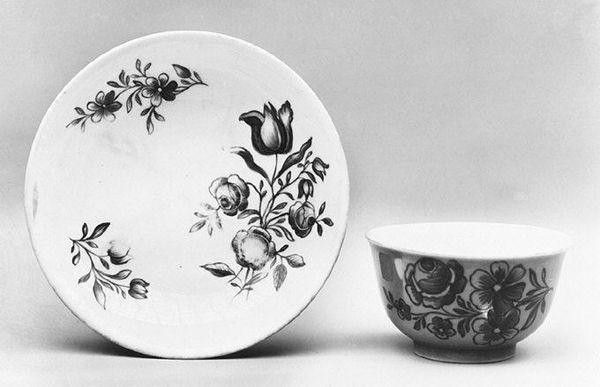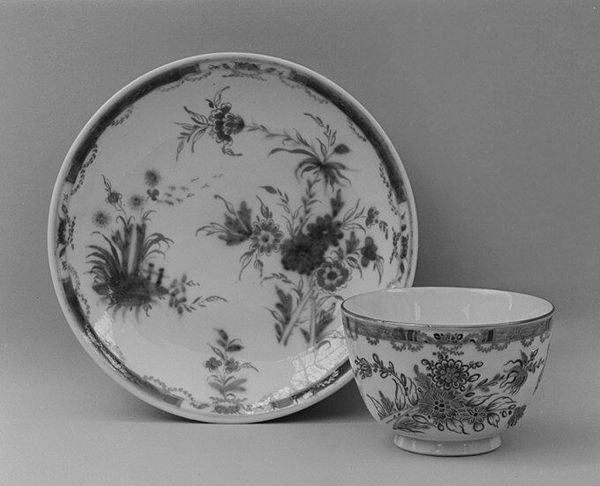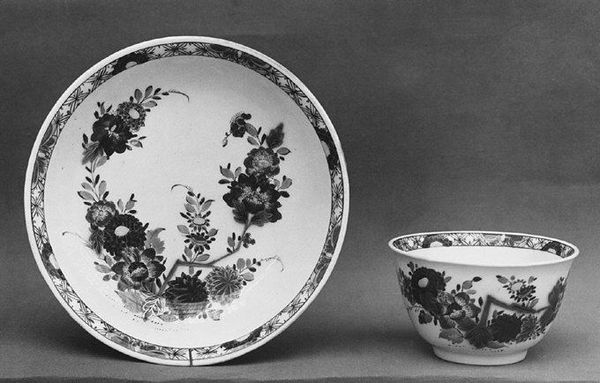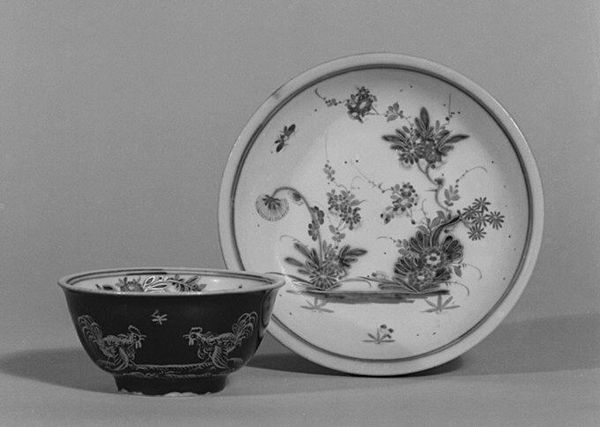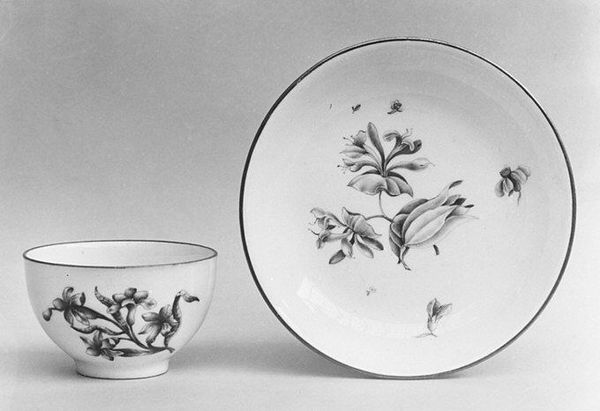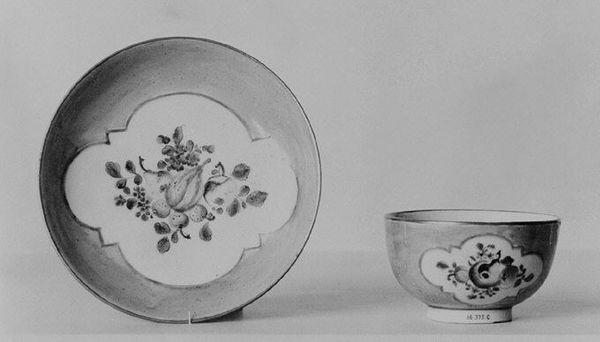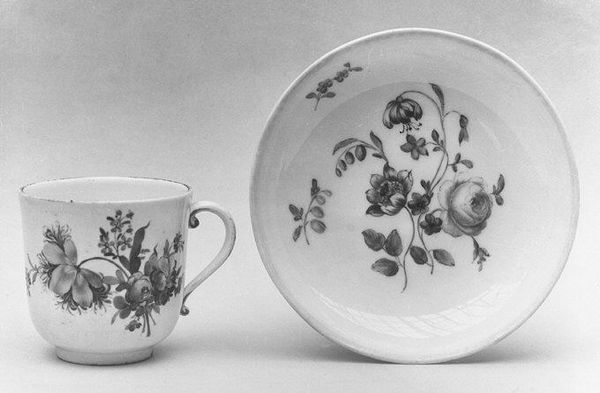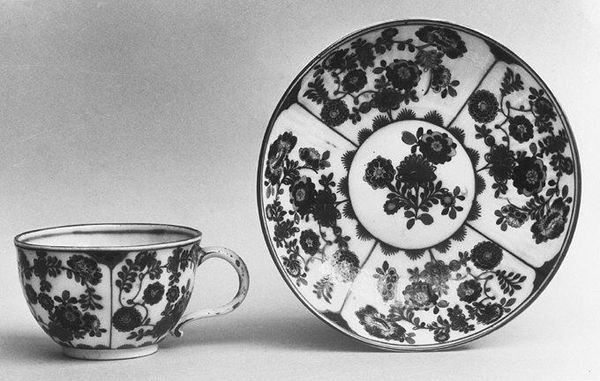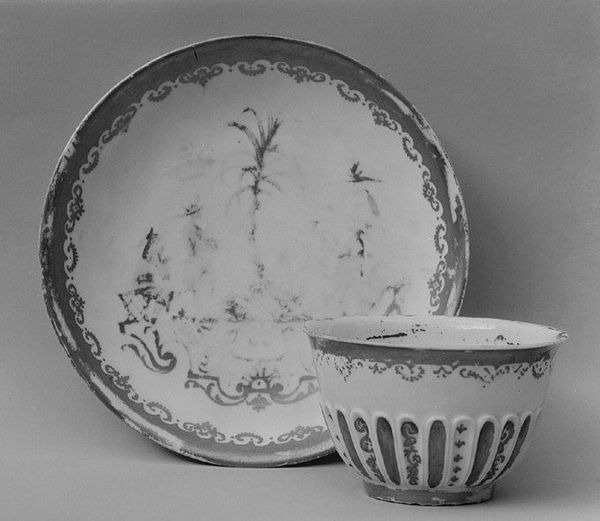
ceramic, porcelain
#
asian-art
#
ceramic
#
porcelain
#
decorative-art
#
rococo
Dimensions: Height: 1 1/2 in. (3.8 cm)
Copyright: Public Domain
Editor: Here we have an 18th-century porcelain cup and saucer from the Meissen Manufactory. It’s beautifully decorated with these delicate floral patterns in the Rococo style, and the craftsmanship seems incredible. What's your interpretation of this piece? Curator: It's easy to appreciate the aesthetics of this cup and saucer, isn't it? But it's crucial to remember the context of its creation. Eighteenth-century porcelain embodies Europe's obsession with exoticism and global trade. Objects like these were status symbols. But what do they tell us about exploitation and cultural appropriation? Editor: Cultural appropriation, in what way? Curator: Well, porcelain-making was a closely guarded secret in China for centuries. The West's desire to replicate it led to immense efforts in espionage and technological theft. Moreover, the floral designs, while seemingly benign, often drew from misinterpreted or exoticized versions of Asian aesthetics. Think about how those power dynamics played out. Editor: So you're saying admiring the beauty is… complicit? Curator: Not necessarily. But we must acknowledge the system of power that enabled its creation. Who got to enjoy these luxuries, and at whose expense? Thinking about the colonial project embedded within such objects allows us a much deeper understanding of their history and significance, no? Editor: That makes me look at it completely differently. I guess objects can be beautiful and problematic at the same time. Curator: Precisely! It is about acknowledging these complexities rather than dismissing them, because ultimately, objects carry and transmit ideology. That makes engaging with art and design such a dynamic process.
Comments
No comments
Be the first to comment and join the conversation on the ultimate creative platform.
